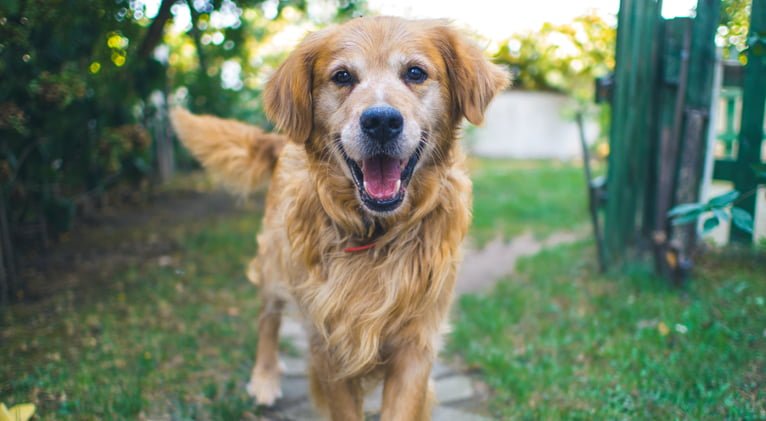If you’ve got children and a dog, or you’ve got friends or family who do, you know how much fun that combo can be! But normal child activity – running, shouting and high-energy play – can be overwhelming for dogs. So it’s really important children learn to be considerate of their four-legged friends and know how to safely spend time with them. Take a look at our advice for keeping kids safe around dogs.
Never leave a child and dog together alone. No matter how used to dogs a child is – and visa versa – it’s essential for an adult to be actively involved at all times when they’re together.
Give dogs a safe space of their own. Just like us, dogs need their own space to relax. Create a doggy den or a ‘dog only zone’ where they can go, and leave them alone when they’re there.
Let dogs have a choice. Always give your dog the option to move away from any interaction – with children or adults – and not be followed.
Do not disturb. If a dog is eating, or playing happily on their own, give them plenty of space to enjoy their food, chew, or toy without being disturbed.
Let sleeping dogs snooze. Dogs need lots of sleep, so if a dog is resting, leave them alone…

Even if you teach children the rules of safe behavior around dogs, you can’t leave it up to them to remember every time. When they’re having fun or being curious they may forget, which could put them at risk and cause stress for the dog. Always stay actively involved with their interactions – even at home with your dog.
Dogs are naturally social and like human company – so they might want to say hello! It’s a great idea to practice what to do if a dog approaches, so you and your children are prepared when you’re out and about. Teach them that they should always ask the owner if it’s okay before going near or touching a dog, and that they need to listen if the answer is no.
Let a dog that’s out for a walk enjoy doing what they want to do. This is their special time to sniff and explore, so they might just want to do their own thing.
If a dog you don’t know approaches you
If you do want to say hello, here’s what to do:

It can be hard to work out what dogs feel or think sometimes, as they can’t talk to us. But their body language can help us understand them better – dogs have many ways to communicate, and use their entire bodies to show other dogs, and us, how they’re feeling.
If a dog is relaxed they tend to have:

If a dog is worried or frightened they may:
If a dog is really upset,they might growl, snarl or snap.
All of these are ways to tell us they aren’t happy and need whatever is happening to stop right away. The more subtle signals usually come first, but some dogs might have learned that growling is the quickest way to get out of a situation when trying to make themselves feel safer.
Dogs who are older, unwell, injured, or in pain, can feel extra vulnerable – and could sometimes appear a little grouchy, just as we might! We can all empathise with just wanting to be left alone when we’re not feeling 100%. If a dog you know starts behaving out of character, it could be because they’re not feeling quite right. Help them out by leaving them well alone, and let their owner know so they can contact their vet for a medical check.
אם מצאת שדף זה מועיל, אנא שקול משאיר תרומה קטנה כדי לעזור לנו ליצור עצות שימושיות יותר.
אתה יכול גם הירשם לניוזלטר החינמי שלנו לקבלת טיפים וטריקים נוספים, וכדי להתעדכן בעבודתנו.
| עוּגִיָה | מֶשֶׁך | תֵאוּר |
|---|---|---|
| cookielawinfo-checkbox-analytics | 11 חודשים | This cookie is set by GDPR Cookie Consent plugin. The cookie is used to store the user consent for the cookies in the category "Analytics". |
| cookielawinfo-checkbox-functional | 11 חודשים | The cookie is set by GDPR cookie consent to record the user consent for the cookies in the category "Functional". |
| cookielawinfo-checkbox-necessary | 11 חודשים | This cookie is set by GDPR Cookie Consent plugin. The cookies is used to store the user consent for the cookies in the category "Necessary". |
| cookielawinfo-checkbox-others | 11 חודשים | This cookie is set by GDPR Cookie Consent plugin. The cookie is used to store the user consent for the cookies in the category "Other. |
| cookielawinfo-checkbox-performance | 11 חודשים | This cookie is set by GDPR Cookie Consent plugin. The cookie is used to store the user consent for the cookies in the category "Performance". |
| מדיניות_צפייה_עוגיות | 11 חודשים | קובץ ה-cookie מוגדר על ידי תוסף GDPR Cookie Consent ומשמש לאחסון בין אם המשתמש הסכים לשימוש בעוגיות ובין אם לאו. זה לא שומר נתונים אישיים. |
צור חשבון או היכנס כדי לשמור חיות מחמד שאתה אוהב.
אין לך חשבון? צור איתנו קשר
לפני שתמשיך עם בקשת האימוץ שלך, אנא עיין וקבל את נוהלי הטיפול בנתונים שלנו:
פֶּתֶק: By clicking "I Agree & Continue", you will be redirected to an external application form. This tracking system logs your interest but does not capture data from the external form.
צור חשבון או היכנס כדי לשמור חיות מחמד שאתה אוהב.
אין לך חשבון? צור איתנו קשר
לפני שתמשיך עם בקשת האימוץ שלך, אנא עיין וקבל את נוהלי הטיפול בנתונים שלנו:
פֶּתֶק: By clicking "I Agree & Continue", you will be redirected to an external application form. This tracking system logs your interest but does not capture data from the external form.